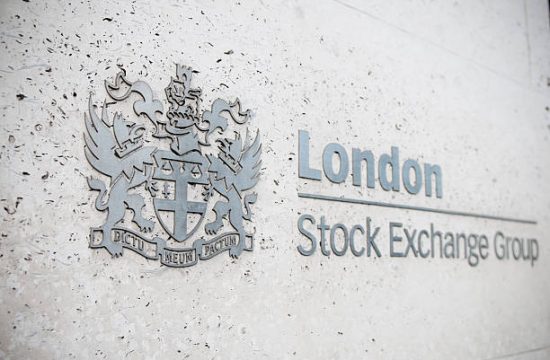Lockdown Exit Plans

As the rate of coronavirus cases continues to fall in many countries, governments are busy unveiling reopening plans to help balance the need for economies to restart without risking new waves of outbreaks and further shutdowns, which would be more damaging to the global economy.
Investors are closely watching the easing measures of the most affected countries, including the USA, Italy, the UK, France, Spain, and Germany. With a vaccine yet to be found, governments are faced with no other option but to proceed with caution. The roadmap to reopening plans varies across countries, cities, and towns. Market participants will likely monitor whether some states are perhaps moving too fast to ease social distancing measures.
|
Investors will continue to eye lockdown exit plans, guidelines, and the debates about the timeline of a vaccine.
|
OPEC+ Cuts Kick-in
May is the official month where the OPEC and non-OPEC allies will start adjusting their production to stabilise energy markets:
- Adjust downwards their overall crude oil production by 9.7 mb/d, starting on 1 May 2020, for an initial period of two months that concludes on 30 June 2020.
- For the subsequent period of 6 months, from 1 July 2020 to 31 December 2020, the total adjustment agreed will be 7.7 mb/d.
- It will be followed by a 5.8 mb/d adjustment for a period of 16 months, from 1 January 2021 to 30 April 2022.
- The baseline for the calculation of the adjustments is the oil production of October 2018, except for the Kingdom of Saudi Arabia and The Russian Federation, both with the same baseline level of 11.0 mb/d.
- The agreement will be valid until 30 April 2022; however, the extension of this agreement will be reviewed during December 2021.
Crude oil price tumbled in the last two months, driven mostly by the collapse in world oil demand that was triggered by the COVID-19 pandemic. The contraction in the Q2 of this year is expected to be around 12 mb/d, with April witnessing the worst contraction at about 20 mb/d.
Oil traders will be hopeful of some stability in the market. Amid the frantic search for storage, production cuts are expected to slow down the speed at which storage tanks are filled while activities are gradually expected to also pick up following easing lockdown measures.
|
This week’s oil reports will also be of utmost importance to gauge inventory levels.
|
Central Banks
Central banks played an important role in guiding and supporting the financial markets during this pandemic. They deployed unprecedented and unconventional measures to help cushion the impact of the novel coronavirus on their economies and ease market strains. Investors will likely keep monitoring their actions for guidance. We will see the Reserve Bank of Australia’s (RBA) rate decision on Tuesday, followed by Bank of England (BoE) on Thursday.
The pandemic has forced the RBA to implement quantitative easing (QE) for the first time. At this meeting, we do not expect any changes in interest rate, but rather more insights on the QE process. Similarly, the BoE is expected to hold steady with attention on BoE’s pathway for the near-term.
Earnings Season
Earnings results are widely expected to highlight the pain inflicted by the coronavirus-induced crisis. Last week, we saw companies as leaders of key industries reporting their quarterly results amid one of the busiest weeks for the earnings season.
Tyson Foods, General Motors, PayPal, Beyond Meat, Lyft, Disney, and CVS will be among the big names reporting earnings this week.
Economic Data
The US GDP data will stand out amid a packed-economic calendar. Aside from central bank decisions, investors will closely monitor the extent of the economic contraction following the shutdowns of the American economic activity.
The Q1 GDP preliminary figures are widely expected to be a preview of how worse the second quarter will be.
Monday
TD Securities Inflation and Building Permits (Australia)
Caixin Manufacturing (China)
Markit Manufacturing (Germany)
Factory Orders (US).
Tuesday
AiG Performance of Construction Index & RBA Interest Rate and Rate Statement (Australia)
Building Permits & GDT Price Index (New Zealand)
SECO Consumer Climate and Consumer Price Index (Switzerland)
Markit Services PMI (UK)
European Commission – Economic Growth Forecasts (Eurozone)
Trade Balance, Markit Services & Composite PMI (US).
Wednesday
Labour Cost, Participation Rate, Employment Change, Unemployment Rate (New Zealand)
Retail Sales (Australia)
Caixin Services (China)
Factory Orders and Markit PMI Composite (Germany)
Markit PMI Composite and Retail Sales (Eurozone)
ADP Employment Change and EIA Crude Oil Stocks Change (US).
Thursday
BoJ Monetary Policy Meeting Minutes (Japan)
Imports, Exports and Trade Balance (Australia)
Exports, Imports, and Trade Balance (China)
RBNZ Inflation Expectations (New Zealand)
Industrial Production (Germany)
Financial Stability Report, BoE Quarterly Inflation Report, MPC Vote, Asset Purchase Facility, Monetary Policy Summary, Minutes and Interest Rate Decision (UK)
Nonfarm Productivity, Initial Jobless Claims, and Unit Labor Costs (US)
Ivey Purchasing Managers (Canada).
Friday
GfK Consumer Confidence (UK)
Overall Household Spending (Japan)
RBA Monetary Policy (Australia)
Unemployment Rate (Switzerland)
Trade Balance (Germany)
Nonfarm Payrolls, Average Hourly Earnings, Labour Force Participation and Unemployment Rate (US)
Average Hourly Wages, Net Change Employment, Participation, and Unemployment Rate (Canada).













